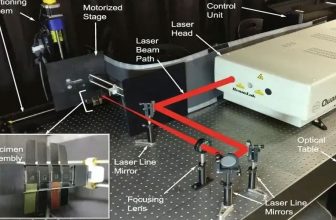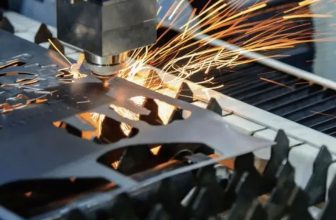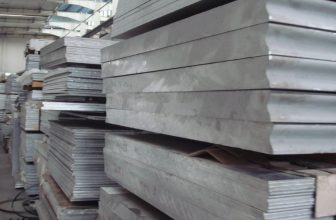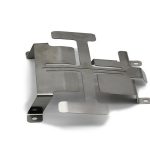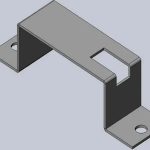
Selecting the material to be used from a variety of materials is a work that is restricted by many factors. Therefore, how to choose the material of the part is an important part of the part design. The principle of selecting materials for mechanical parts is: the required materials should meet the requirements of the parts and have good manufacturability and economy.
The Requirements For The Use Of Mechanical Spare Parts
The requirements for the use of mechanical parts are as follows:
1) The working conditions and loading conditions of the parts and the requirements for avoiding the corresponding failure modes.
The working condition refers to the environmental characteristics, working temperature and the degree of friction and wear of the parts. For parts that work in hot and humid environments or corrosive media, the materials should have good rust and corrosion resistance. In this case, stainless steel, copper alloys, etc. can be used first. The influence of working temperature on material selection mainly has two aspects: on the one hand, it should be considered that the linear expansion coefficients of the two parts that cooperate with each other should not be too different, so as to avoid excessive thermal stress or loosening of the fit when the temperature changes; It is also necessary to consider the change of the mechanical properties of the material with temperature. To improve the surface hardness of parts working under sliding friction to enhance wear resistance, quenched steel, carburized steel, nitrided steel and other varieties suitable for surface treatment should be selected or those with good anti-friction and wear resistance should be selected. Material.
The load condition refers to the magnitude and nature of the load and stress of the part. In principle, brittle materials are only suitable for manufacturing parts that work under static load; in the case of impact, plastic materials should be used as the main material; for parts with large contact stress on the surface, surface treatment should be selected. Materials, such as case-hardened steel; for parts subject to strain, a fatigue-resistant material should be selected; for parts subject to shock loads, a material with higher impact toughness should be selected; For parts, materials with higher strength should be selected; for parts whose dimensions depend on stiffness, materials with larger elastic modulus should be selected.
The properties of metal materials can generally be improved and improved by heat treatment. Therefore, it is necessary to make full use of the means of heat treatment to exert the potential of the material. For the most commonly used modulated steel, blanks with different mechanical properties can be obtained due to different tempering temperatures. The higher the tempering temperature, the lower the hardness and stiffness of the material, and the better the plasticity. Therefore, when selecting the variety of materials, the heat treatment specifications should be specified at the same time, and marked on the drawings.
2) Limitations on the size and quality of parts.
The size and quality of the parts are related to the variety of materials and the manufacturing method of the blank. When producing cast blanks, it is generally not limited by size and quality; when producing forged blanks, attention should be paid to the production capacity of forging machinery and equipment. In addition, the size and mass of the parts are also related to the strength-to-weight ratio of the material. Materials with a large strength-to-weight ratio should be selected as much as possible to reduce the size and quality of the parts.
3) The importance of parts in the whole machine and components.
4) Other special requirements (such as whether insulation, anti-magnetic, etc. are required).
The Process Requirements Of Spare Parts
In order to make the parts easy to process and manufacture, the complexity, size and blank type of the part structure should be considered when selecting materials. For parts with complex shape and large size, if casting blanks are considered, materials with good casting properties should be selected; if welding blanks are considered, low-carbon steels with good welding performance should be selected. For parts with simple shape, small size and large batch, suitable for stamping and die forging, materials with better plasticity should be selected. For parts requiring heat treatment, the material should have good heat treatment properties. In addition, the machinability of the material itself and the machinability after heat treatment should also be considered.
The Economic Requirements Of Spare Parts
1) The relative price of the material itself
On the premise of meeting the requirements of use, materials with low prices should be selected as far as possible. This is especially important for high-volume manufactured parts.
2) The processing cost of the material
When the quality of the part is not large and the processing volume is large, the processing cost will account for a large proportion of the total cost of the part. Although cast iron is cheaper than steel, for some single-piece or low-volume box-like parts, it is more expensive to use cast iron than steel to weld, because the latter can save the cost of mold manufacturing.
3) save material
In order to save materials, heat treatment or surface strengthening (shot peening, rolling, etc.) processes can be used to give full play to and utilize the potential mechanical properties of materials; surface coating (chrome plating, copper plating, blackening, blue, etc.) methods can also be used, To reduce the degree of corrosion and wear and prolong the service life of parts.
4) Utilization rate of materials
In order to improve the utilization rate of materials, no cutting or less cutting can be used, such as die forging, precision casting, stamping, etc., which can not only improve the utilization rate of materials, but also reduce the man-hours of cutting.
5) Save valuable materials
By adopting the combined structure, expensive materials can be saved. For example, the worm gear ring of the combined structure is made of tin bronze with good anti-friction but expensive, and the wheel core is made of cheap cast iron.
6) Save rare materials
In this regard, manganese-boron series alloy steel with abundant resources in my country can be used to replace chromium-nickel alloy steel with less resources, and methods such as aluminum bronze instead of tin bronze can be used.
7) Availability of materials
When selecting materials, materials that are locally available and easy to supply should be selected to reduce the cost of procurement, transportation and storage; from the perspective of simplifying the supply and storage of material varieties, for parts produced in small batches, the cost of The variety and specifications of materials are used on the same machine to simplify supply and management, and it is easier to grasp the most reasonable operation method during processing and heat treatment, thereby improving manufacturing quality, reducing waste and improving labor productivity.



